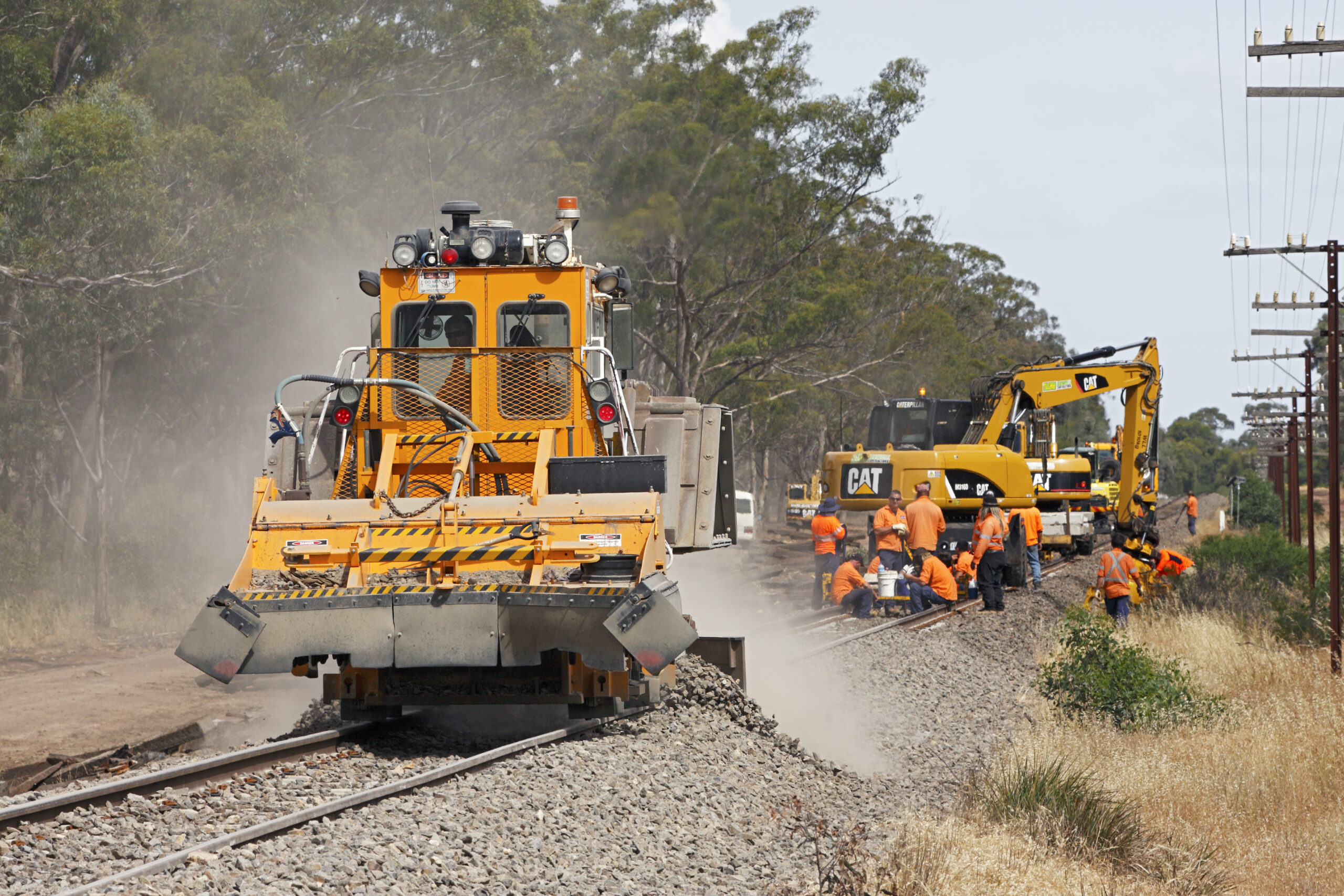Silica is also used by railroads in locomotive sanding systems. Sand is crucial because it provides friction, helping locomotives gain traction when pulling and helping to stop the train in emergencies. Railroads fill sand towers near their locomotive shops or service tracks where locomotives are fueled and sanded. Older sanding systems frequently spilled sand, exposing the utilitymen filling the locomotives to silica. The laborers maintaining the sand systems suffered silica exposures. The fact is, because silica becomes windborne, all of the workers in the yards near the sanding towers would have had varying levels of silica exposures. In addition, railroads notoriously failed to clean up piles of silica in the yards. This silica would blow across the yards exposing train crews and car inspectors to unsafe levels of silica.
How Can Railroads Prevent Silica Exposures?
By the late 1980’s, most railroads had initiated respirator programs designed to safeguard workers from exposures to toxins such as asbestos, lead, solvents, paint and silica. Most utilitymen or laborers sanding locomotives should have been fit-tested for respirators to help prevent silica exposures.
But even as of 1992, a NIOSH study at CSX’s Radnor Yard in Nashville, Tennessee determined that railroad track department workers were suffering dangerous silica exposures. Responding to complaints by the union, NIOSH conducted both area and personal air sampling on maintenance of way (MOW) workers. Eighteen of the personal samples taken of CSX MOW workers exceeded OSHA Permissible Exposure Limits for respirable dust and twenty-eight of the personal samples exceeded NIOSH’s Recommended Exposure Limit for respirable quartz. The samples were obtained from broom and tamper operators and machine operators on ballast regulators. Trackmen performing ballast dumping were also sampled.
As a result, NIOSH determined that a silica hazard existed for these workers and demanded that CSX take corrective measures. NIOSH recommended that CSX source ballast with less silica, wetting of ballast to prevent dust, and modification of CSX’s on-track equipment cabs. The modification of the equipment cabs was to include installation of air-conditioning, better seals on windows and doors, and pressurization systems.

What is Silica?
Crystalline silica is a naturally occurring mineral in sand, granite, soil, and other types of rocks. Crystalline silica is also known as quartz, cristobalite, and respirable silica in dust form. In addition to being naturally occurring, silica is present in manmade materials as well, such as brick, mortar, glass, and concrete. Respirable crystalline silica consists of small particles that are generated when cutting, sawing, breaking, or in some way disturbing silica containing materials.
Illnesses Caused by Silica
Silicosis is the most commonly associated illness to silica exposure. Silicosis is a chronic lung disorder caused by prolonged inhalation of silica. Silicosis is characterized by a progressive cough and shortness of breath. There is no treatment for silicosis, which is why it is important to prevent occupational exposure to silica.
In 1997, the International Agency for Research on Cancer (IARC) classified silica as a carcinogen because silica exposures cause lung cancer. In addition, workers who are exposed to silica are at increased risk of developing chronic obstructive pulmonary disease (COPD), pulmonary fibrosis, kidney disease, and other respiratory illnesses. Silicosis also increases the risk of developing tuberculosis.
Where is Silica Found?
Due to the abundant uses of silica, it is found in many industries. Those working in railroad, maritime, and construction industries are especially susceptible to respiratory silica exposure. Airborne exposure to silica occurs during abrasive blasting, sanding, drilling, or sawing of concrete, brick, or other materials with silica. The Occupational Safety and Health Administration (OSHA) has standards and limits in place in order to protect workers from exposure to silica.
Representative Silica Cases:
$19,170,000 verdict and $500,000 settlement— A 50 year-old railroad carman died after experiencing pulmonary fibrosis due to his occupational exposure to pollutants during his employment. Plaintiff alleged that the defendants failed to provide a safe work environment, failed to provide respiratory protection, and failed to warn that silica, asbestos and other substances could cause health complications. Defendants argued that his condition was due to his exposure to dust as a carpenter or from smoking cigarettes. The jury rendered a verdict for $19,170,000. Prior to trial, a nonparty railroad corporation settled for $500,000. (Fuccilli v. New Jersey Transit; Central Railroad of New Jersey)
$3,700,000 verdict— A retired railroad engineer with pulmonary fibrosis caused by years of inhaling diesel fumes, silica dust, and asbestos while working for the defendant. He worked for the defendant from 1970 and retired in 1999. He was diagnosed with pulmonary fibrosis in 2006. His condition is chronic, progressive, and will result in his death. (Edward Roger Jolley v. Burlington Northern Santa Fe)
$2,000,000 settlement— A sandblaster alleged to suffer from silicosis and asbestosis from using silica sand during his 14 years of employment. The silica sand was manufactured by the defendant and marketed and designed by the other defendants. The plaintiff claimed that the defendant neglected federal regulations pertaining to silica as well as failed to warn about the possibility of developing silicosis. The plaintiff also alleged that the remaining defendants negligently marketed and designed the sand and that it was unsafe and defective. (Horton v. Lone Star Industries, formerly known as Texas Construction Materials Company; Minnesota Mining & Manufacturing; Ogleabay North Industrial Sands Inc.; Pulmosan Safety and Equipment Corp.; Scott Aviation Corp.; Specialty Sand; Thorstenberg Materials Co.)
$240,000 settlement— A brakeman inhaled high concentrations of silica during his employment with the defendant railroad. As a result, he suffered from pulmonary silicosis and kidney disease. Plaintiff alleged that the defendant failed to provide a safe work environment, failed to warn of the danger of silica exposure, and failed to provide protective equipment. The parties settled before trial. (Boros v. Consolidated Rail Corp.)
Diesel Injury Law provides case histories like those above to inform visitors about actual case fact patterns and rulings. Unless specifically noted, the cases summarized herein were not handled by attorneys at Diesel Injury Law. If you believe that you have a similar case, feel free to call 312-877-5588 and speak with an attorney today.

